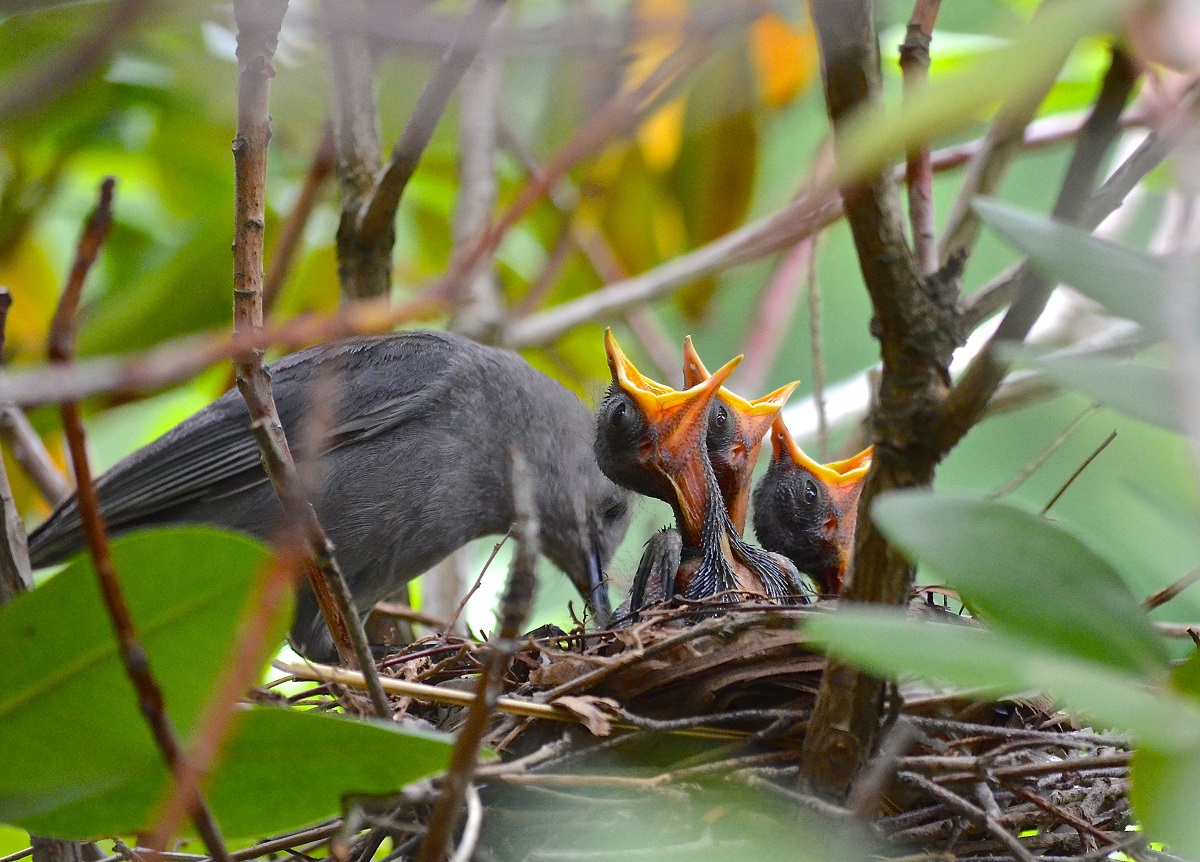Grey catbird nests are inviting to other species such as the brown cowbird. However, they do not tolerate brood parasitism, so they will evict foreign eggs from the nest they build in dense shrubbery. They destroy the nests of other birds such as robins and sparrows who are not squatters in their nests.
The melodious grey catbird has some mating rituals, nesting habits, and behaviors that make them interesting to backyard birders and ornithologists alike.
Bushes, thickets, dry marsh edges, vines, and small trees are where you might find the Gray catbird (Dumetella carolinensis.) The bird belongs to the Mimidae family, which includes the brown thrasher. They may be called slate-colored mockingbirds, but they are not related to mockingbirds, although they are in the same family.
Recognizing The Gray Catbird
You’ll recognize a catbird by a distinct black cap, bill, and overall gray body with rusty parts below their tails. It looks somewhat like a thrush and has a long tail.
Grey catbirds are known to mimic the sounds of other animals. The mew call they make in the face of danger to serve as a warning gave them their name. In addition, they incorporate the songs of other birds in their repertoire,
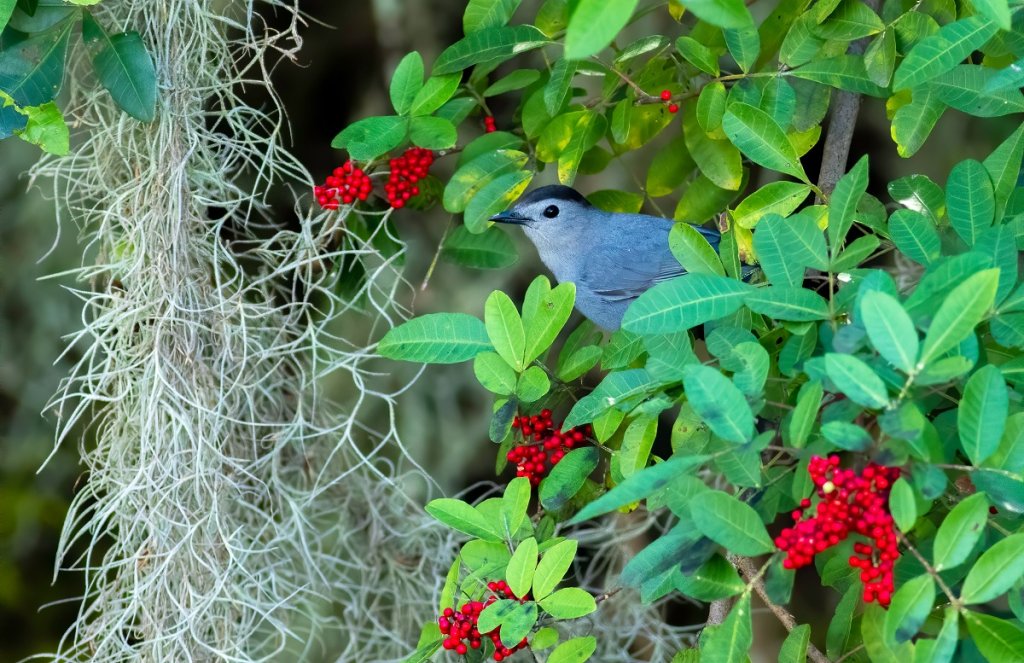
The Natural Habitat of the Gray Catbird
Catbirds will nest and forage for food in areas where the foliage is dense. They might choose thickets, overgrown shrubs, clumps of vines, roadside shrubbery, dry edges of marshes, abandoned fields, and fencerows. They even build in elderberry, honeysuckle, and blackberry bushes, which makes for easy dining as they love these fruits!
Humans will often disturb their natural habitats by cleaning roadsides and fencerows. Catbirds may be found in abandoned farms and residential areas, but again, they’ll leave if there are any disturbances.
Even though they are friendly toward people and rather inquisitive, they prefer to stay out of sight.
Typical Breeding Grounds of the Gray Catbird
Gray catbirds are migratory birds, meaning they’ll breed and winter in different areas. They’ll spend winter in southern regions (think Mayan ruins in Guatemala or Florida, Mexico, Central America, and the Caribbean) and move back to North America for the summer.
If they mate in the upper Midwest, they’ll winter in Central America. If they mate in the mid-Atlantic and New England, they’ll winter in Florida or the Caribbean.
Some catbirds will nest in a total of 46 of 48 states in the US and some parts of Southern Canada.
When they are on their home turf, they do not spend much time in forests, although they do when wintering. They are likely to return to the same place year after year.
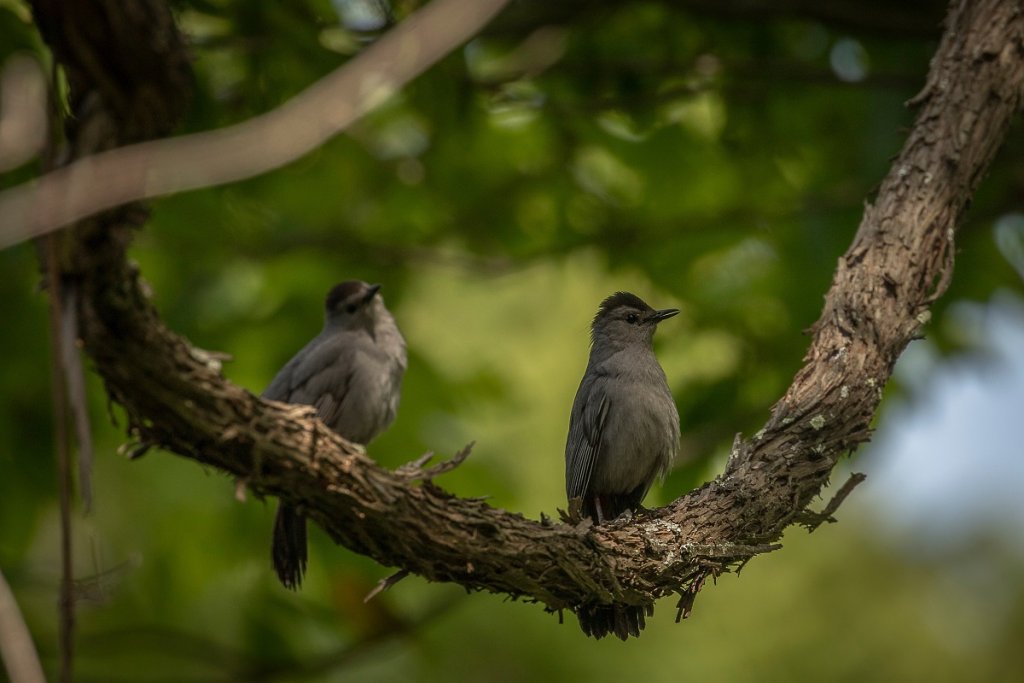
Mating and Breeding
The pairs usually bond at the beginning of the breeding season (late April to June). The males will conduct a courtship display to lure the female for a breeding session. They’ll chase the female, raise their tails, and show their rusty patches.
Females will prefer males that can offer a variety of vocals, as this shows they’ve been around for a while. Both males and females will protect their territory. To do so, they’ll fluff their chest and spread their tails. Once they finish mating, they’ll move on to build the nest.
Once the birds mate, they remain monogamous for the season.
Catbird Nest Building
If an area provides a safe place for successful brood raising, catbirds will return to that spot to build a new nest each spring. If not, they’ll look for other places.
Catbirds build nests on horizontal branches hidden within a bush or tree. Their nests are loosely knit, cup-looking construction made from various plant materials such as leaves, grass, horsehair, grapevine bark pine needles. Usually, they’re 4 feet above the ground.
Nests take up to 6 days to build. Finished nests are about 5.5 inches across and 2 inches deep.
When it comes to nest building, male gray catbirds will usually observe, while female catbirds will do all the work.
Once the nest is done, the female will lay a clutch size of 2 to 6 turquoise eggs, which only she will incubate. The incubation lasts from 12 to 14 days.
As she starts laying eggs, brown-headed catbirds try to lay their eggs in the catbird nest. Catbirds will always recognize brood parasites and toss that egg out. They do not instinctively know what their own eggs look like. If the cowbird slips her own buff spotted egg in and removes the blue catbird egg, the female might think that her eggs should be whiteish with spots and destroy her own eggs by mistake.
The reason the birds are quick to reject what they think to be intruders is that competition for food is great. They are territorial in providing for their own young. This desire to protect their own may be what leads them to destroy the nests and nestlings of other birds, including eastern wood pewee, chipping sparrows, and song sparrows. However, other birds, such as house sparrows, bluejays, and grackles, exhibit similar aggressive behavior.
Do Catbirds Use Other Birds Nests?
While catbirds won’t use other birds’ nests to raise their young, they tend to destroy eggs from other kinds. According to one researcher, there are several reasons for this behavior. For example, destroying the eggs may provide nutrients to the catbird or reduce competition for limited food sources.
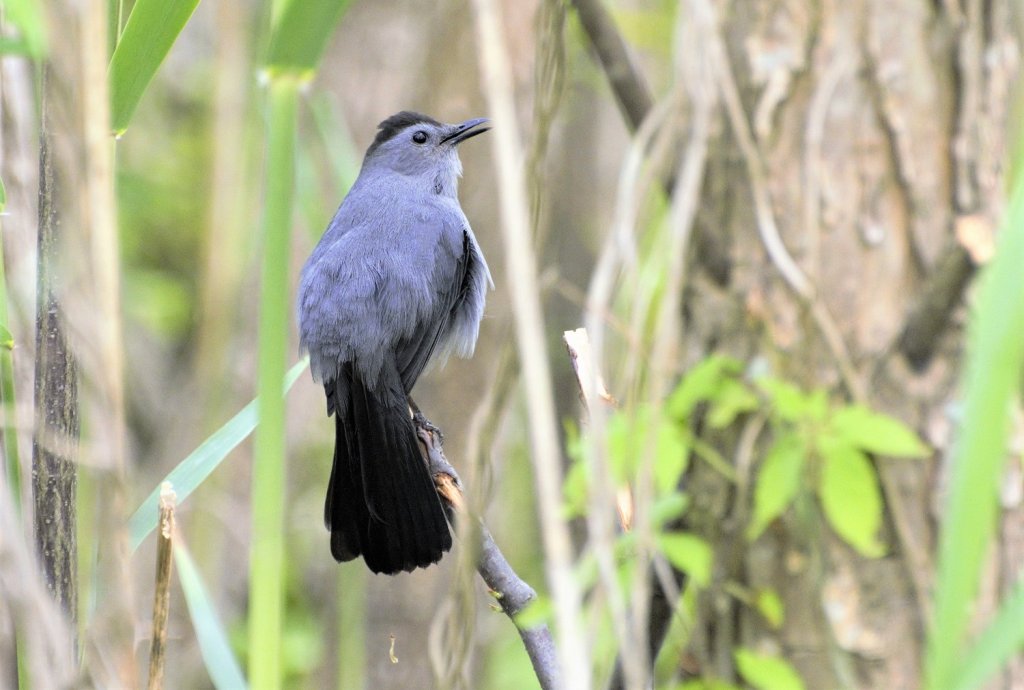
Catbird Parenting
The babies will be born naked and completely dependent on their parents for food, and both male and female parents will feed their young a diet of moths, grasshoppers, caterpillars, suet, blueberries, raspberries, and raisins.
If they deem the nest in danger, they’ll make mewing sounds. If you hear the meow song, it’s time you move away — these songbirds are warning you. When they’re around the house, they’re as friendly as wrens. Still, they may fight for their territory and chase off other birds. They can be super hostile when they defend their nests.
The youngsters will stay in for a nestling period of about 12 days. Babies will then fledge.
Once out of the nest, the fledglings are easy prey for catbirds, crows, and rats. About 60% of catbirds make it to the next season, and that rate is inflated by large fatalities among the babies.
A catbird couple will stay together for as long as their babies fledge. They may then make a new nest for another brood or two.
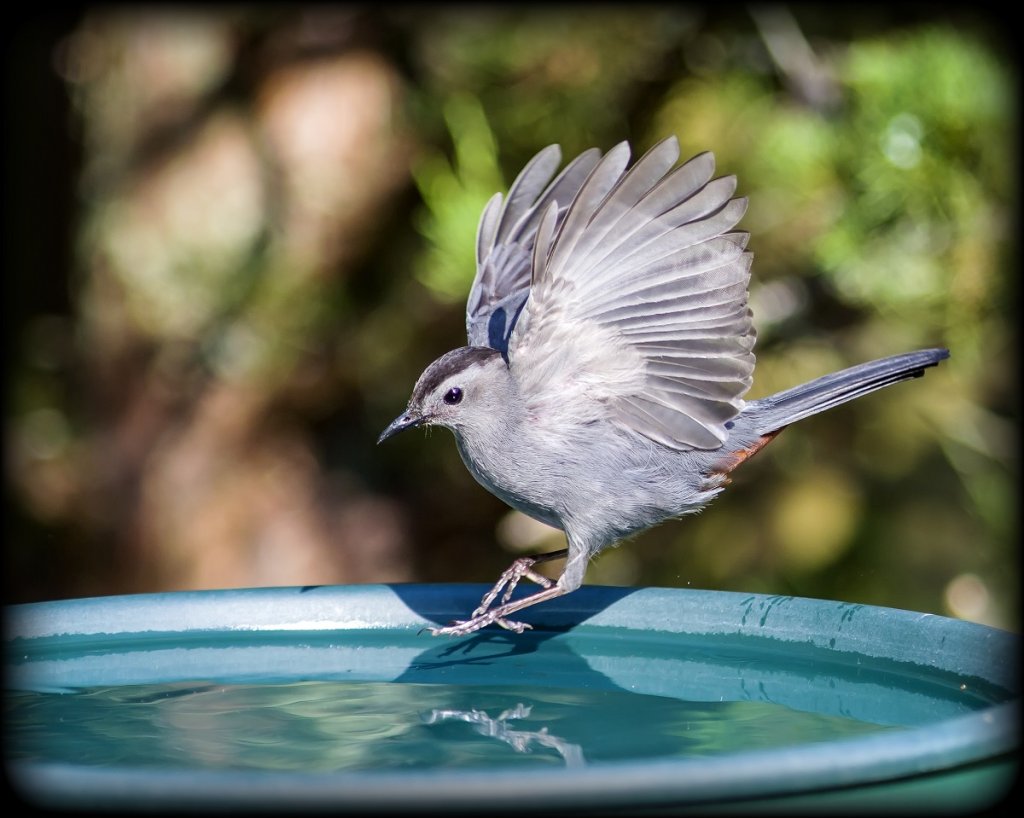
Do Catbirds Use Bird Houses?
This avian species will hardly use a birdhouse for its nest. as they prefer to build their own
However, they might use a nesting platform if there aren’t any handy spots for nest building. If you want to help the birds, place the nest platform in the partial shade close to the branches or below the porch roof. Plus, include the birdbath in your yard, as catbirds love it.

